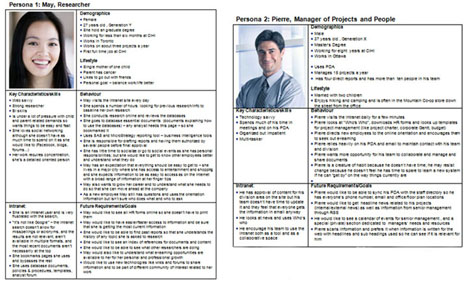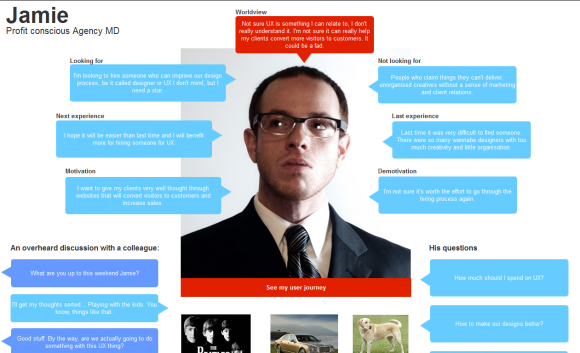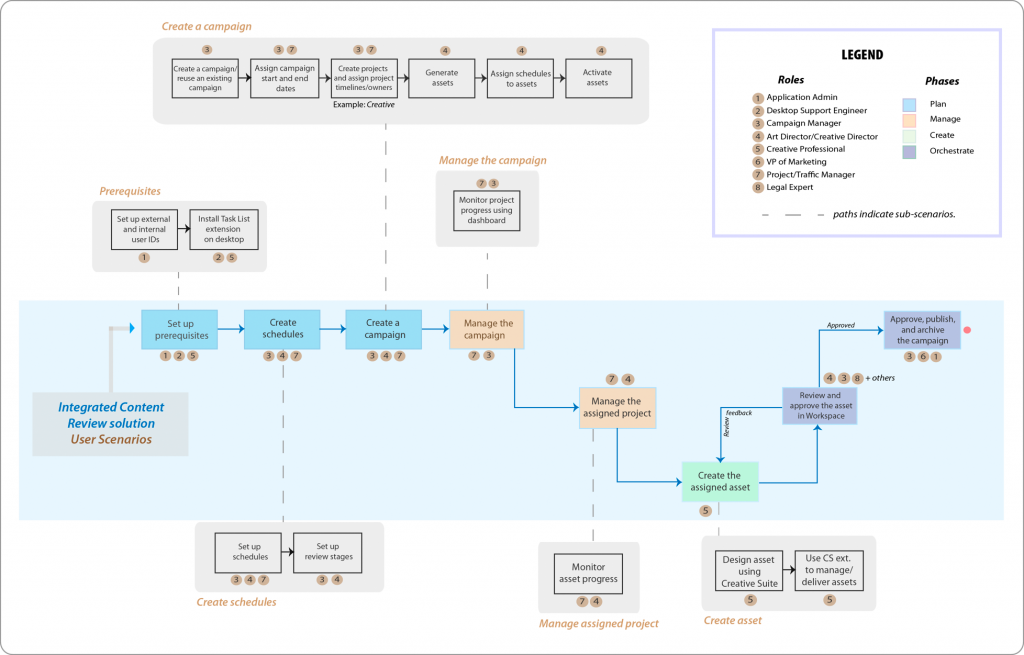When working with clients to achieve their goals of improving or redeveloping their website, we often have to start with some education around user experience (UX) and the user’s needs. It is very difficult for many organisations to separate themselves from their internal structure, what’s important for their business to represent and remembering to put the user or the customer’s needs first. Of course the business needs are important, but if you don’t put the user first when you’re planning your website, you run the risk of them going to one of your competitors websites where they make it easier for the user to service their needs. If you put the user experience first when planning your website, you will achieve your business goals as well.
Wikipedia’s definition of user experience is:
User experience (UX) is the way a person feels about using a product, system or service. User experience highlights the experiential, affective, meaningful and valuable aspects of human-computer interaction and product ownership, but it also includes a person’s perceptions of the practical aspects such as utility, ease of use and efficiency of the system. User experience is subjective in nature, because it is about an individual’s feelings and thoughts about the system. User experience is dynamic, because it changes over time as the circumstances change.
I’ve bolded the second part of the user experience (UX) definition as I think this is the most important part for businesses to understand. User experience planning for websites depends on so many subjective factors. Factors that are difficult to qualify on a large scale – such as feelings and thoughts. The best way to understand how a user thinks, feels and interacts with a website are to ask them and then watch them interact with the website. This often means basic, not yet designed prototypes have to be built so as to complete this testing at the beginning of the website project, but the benefits are huge. But before you can run some user experience focus groups and one on one research testing, you need to understand who your audience is and what their thinking process is when engaging with your website.
There are a few different methodologies you can employ to discover your true web audience – they depend largely on your budget and resources.
1. Utilising your existing database and past marketing and sales data to segment and learn about your customers and website users. Depending on your business, some will have more of this rich information than others
2. There are many online subscription tools that can help an organisation understand who their online audience is – Hitwise Market Intelligence, Nielsen Online and ComScore can tag your existing website (for website rebuilds obviously) and measure
- who your website visitors are
- their demographic breakdown (age, gender, location, education etc)
- their online behaviour and
- you can also learn what other websites your audience also frequent.
If you can afford it, using online measurement tools is incredibly advantageous for user experience planning because the data is real for the point in time that you’re planning, not historical. And the information you gain about your web visitors other online behaviours is invaluable – for partnership opportunities, for understanding their mindset and interests as well as their needs.
3. Utilise industry market research to guide your understanding of your users and run focus groups to confirm and define the user groups.

Another example of a website persona to help businesses plan their website for the best possible user experience
Once you have a solid understanding of who your audience is – and sometimes there are several niche segments within one primary group or you may find you have largely conflicting user audiences – which is often the case within the education sector whose websites are trying to appeal to high school students, the parents of high school students, Industry leaders and international researchers. Very different levels of knowledge and expectation. To be able to accomodate all of your user’s needs, it is advisable to build website persona profiles. These persona profiles will take into consideration all of the data you have compiled about your user’s and develops an actual personal profile and story that will represent each of the user groups that visit your website.

This website persona shows a speech bubble thought process documenting one type of website visitor and how they will engage with and experience your website
A website persona profile will usually be a 1-2 page summary of each of your audience types. It will summarise the user persona’s demographic breakdown, what they do for a living, their family responsibilities and how they think in general. The website persona will then run through a scenario of how this particular user goes about the process of engaging with your specific type of website. If your persona is a high school student looking to choose a university, the persona will work through the thought process they might follow when looking for information to make their decision. This thought process is often referred to as the consideration cycle.
User persona profiles help us digital marketers to better understand how our users think and feel about our websites or products. But a user scenario maps out the process that your website persona will actual work through when trying to achieve their goals. A user goal may be to find the fees for a particular university degree or to upload a job application or if you’re an eCommerce business your user’s goals may be to purchase a product and have it delivered to a friend overseas. User scenarios not only help to better define the user persona but also to provide situations to test their website against with actual representatives from each of the persona user groups.

A website user scenario shows the process of how a website user might behave when interacting with the business website
A user scenario, sometimes called a user story or a user workflow, is used to map out and wireframe a website and its functionality, so as to meet the user’s needs. But when you have a prototype or a working website, it is important to go back to these user scenarios and actually run them as live tests. Typically a business will run user acceptance testing (UAT) internally within the business – where the business or project owners run through the scenarios as a user might to look for any issues (called bugs in web terminology) or unexpected functionality or website behaviour. Obviously internal stakeholders are often too close to the project to look at it objectively (even though we said above that the user experience is subjective) so it is important to still ensure that your user scenario goals are testing by the real users.
To go back to the top of the page and re-read the definition of user experience (UX), I also wanted to emphasise that the user experience is dynamic and it does change over time. To ensure that your website visitors have the best possible user experience when engaging with your website businesses will have to continue to invest in user experience and usability testing to make sure they are still meeting their user’s expectations. Because technology is constantly changing and improving and as user’s adopt more and more technology, such as smartphones and iPads and other mobile devices, their online behaviour changes and the expectations change. The more we use the internet the more proficient we become and as businesses push the boundaries the user’s expectations become higher. Consumers won’t spend time on a website that has a poor user experience – they’ll leave and go to Google and search for another site that helps them achieve their goals faster and easier. So please, invest in user experience planning and testing and always remember to put the user first. If you do, they will reward you with their repeat business and will promote your website to their network of friends and family.
So, that is a lot to take in – but if you have any questions about user experience (UX) planning for websites, please do not hesitate to ask.

Trackbacks/Pingbacks